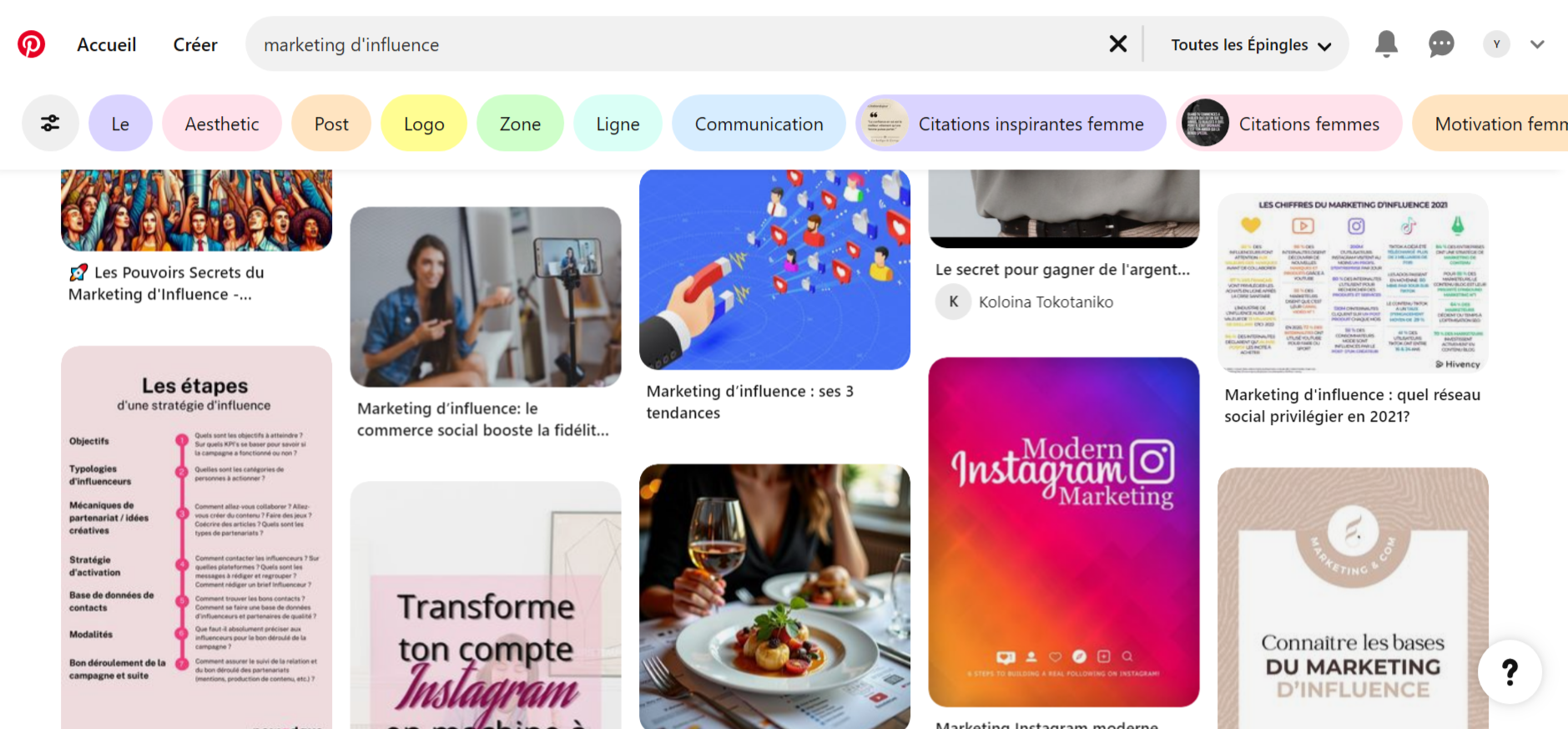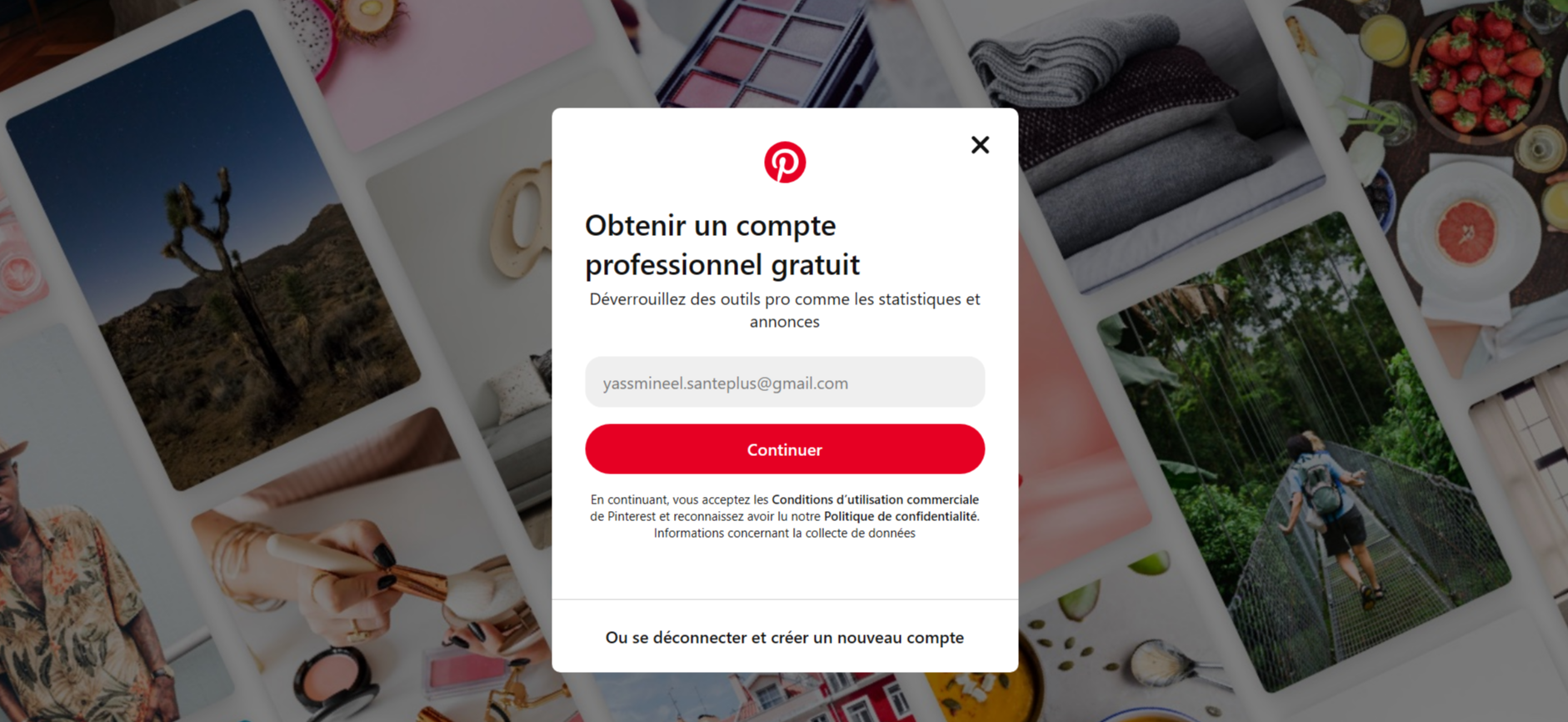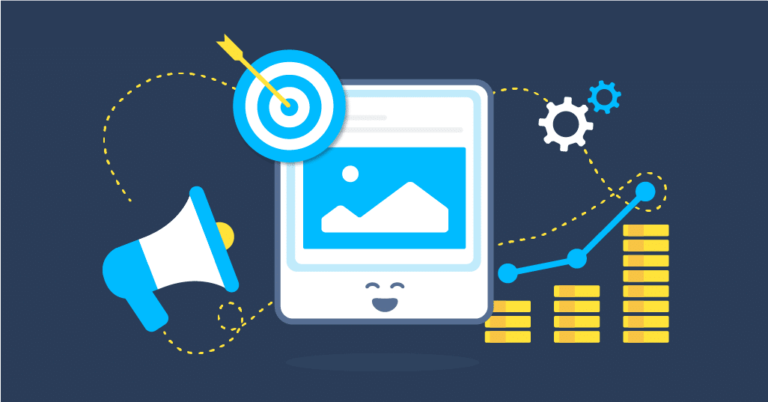Did you know that Pinterest can turn your blog into a real traffic and revenue-generating machine? More than just a social network, this platform is an ideal visual search engine for attracting a targeted and engaged audience. By following a well-defined strategy, you can harness its potential to create a profitable blog. In this article, discover step by step how to use Pinterest to boost your traffic, retain your audience, and maximize your earnings. Ready to get started? Read on!
1. Understanding Pinterest’s Potential for Bloggers
To fully leverage Pinterest, it is essential to understand why this platform is an indispensable tool for boosting traffic and monetizing a blog.

Pinterest: A Visual Search Engine
Unlike other social networks, Pinterest acts as a visual search engine, where users actively search for ideas, products, and solutions. With over 450 million monthly active users (2023 data), this platform is a goldmine for attracting a targeted audience. For example, a cooking blog can generate traffic by posting pins of popular recipes, while a decor blog can attract attention with tutorials or DIY ideas.
Ideal for Specific Niches
Certain themes perform particularly well on Pinterest:
- Cooking: Easy recipes and practical tips.
- Decor: Design inspirations and DIY ideas.
- Wellness: Tips on fitness or skincare.
By targeting these niches, bloggers attract qualified traffic, thus increasing conversion opportunities.
2. Preparing Your Blog to Attract Pinterest Traffic
Once you understand Pinterest’s potential, it is crucial to prepare your blog to maximize its impact and turn visitors into loyal readers.

Creating Quality Content Optimized for Pinterest
Content is key to success in attracting an audience from Pinterest. Your articles should be informative, visually appealing, and meet user expectations. Tutorials, practical lists, and detailed guides are particularly popular. For example, a travel blog could include comprehensive itineraries with quality photos, while a cooking blog could offer step-by-step recipes with captivating visuals.
Optimizing Your Blog’s SEO
To ensure Pinterest generates maximum traffic to your site, you need to integrate relevant keywords into your articles, titles, and descriptions. These keywords should match popular searches on Pinterest. For example, if you are posting about interior decoration, use terms like “modern living room decor ideas” or “easy DIY decoration”.
Adding Pinterest Share Buttons to Your Blog
Make it easy for your content to be shared by adding visible “Pin It” buttons to every image in your articles. This allows your readers to easily pin your content, thus increasing its visibility on Pinterest and attracting new organic traffic.
3. Building an Effective Pinterest Strategy
A well-defined strategy is essential to leverage Pinterest’s full potential and generate consistent traffic to your blog.

Creating a Professional and Optimized Account
The first step is to switch to a Pinterest business account. This type of account offers essential tools like detailed analytics, rich pins, and better visibility. Make sure to personalize your profile with a photo or logo, a clear description containing keywords, and a link to your blog. For example, for a wellness blog, use keywords like “natural wellness,” “holistic care,” or “home fitness.”
Producing Attractive and Engaging Pins
Visual pins are the heart of Pinterest. Invest in high-quality visuals and use tools like Canva to create professional designs. Characteristics of an effective pin include:
- A vertical format: Ideal for fitting Pinterest’s layout (ratio 2:3).
- Overlaid text: Catchy titles attract more clicks.
- Vibrant and contrasting colors: These elements increase the visibility of your pins in user feeds.
For example, a fashion blog might create pins for seasonal style guides, with titles like “10 Must-Have Outfits for Summer.”
Posting Regularly and Joining Collaborative Boards
To maximize your visibility, post regularly and participate in collaborative boards. These boards, shared among several users, allow you to expose your pins to a wider and more targeted audience. For example, if your blog focuses on interior decoration, look for boards related to that theme and strategically add your pins.
4. Monetizing Your Blog Through Pinterest Traffic
Once you generate a steady flow of visitors via Pinterest, it’s time to convert that traffic into revenue to make your blog truly profitable.

Using Affiliate Programs
Affiliate programs are an accessible and effective method to monetize a blog. By integrating affiliate links into your articles, you can earn commissions on sales generated through your content. For example, if you run a travel blog, you might include links to travel gear on Amazon Associates or agencies offering bookings. Authentic and informative content, such as buying guides or “must-have” lists, increases your chances of conversion.
Creating and Selling Digital Products
Digital products, such as ebooks, online courses, or downloadable templates, are another interesting source of revenue. Pinterest is ideal for promoting these products through attractive pins that redirect directly to your store or sales page. For example, a wellness blog could sell a downloadable guide on meditation or fitness routine planners.
Collaborating with Brands
Once your blog is established, you can collaborate with brands for sponsored posts or partnerships. Highlight your Pinterest-generated traffic statistics, such as clicks or impressions, to prove your value. For example, a blog on interior decoration could partner with a furniture brand for sponsored posts.
Pinterest can transform your blog into a profitable revenue source, especially when integrated into a multi-platform strategy. With Sosoon, easily manage your Pinterest, TikTok, and X accounts to multiply your traffic sources and maximize your opportunities. Take action today to boost your results!





